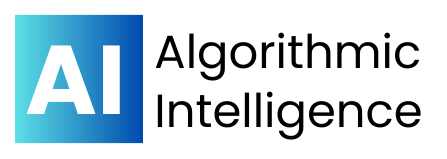Navigating the world of health insurance can feel like learning a foreign language. Between acronyms like HMO and PPO, confusing terms like deductibles and copayments, and the pressure to make the “right” choice, it’s no wonder many first-time buyers feel overwhelmed. Whether you’re a recent graduate entering the workforce, someone transitioning between jobs, or simply taking control of your healthcare coverage for the first time, understanding health insurance basics is crucial for both your financial well-being and peace of mind.
Health insurance serves as a financial safety net, protecting you from the potentially devastating costs of medical care. Without coverage, a single emergency room visit could cost thousands of dollars, and a major medical procedure could result in bankruptcy. By understanding how health insurance works and what options are available, you can make informed decisions that protect both your health and your wallet.
What Is Health Insurance and Why Do You Need It?
Health insurance is essentially a contract between you and an insurance company. You pay a monthly premium, and in return, the insurance company agrees to pay for a portion of your medical expenses according to the terms of your policy. This arrangement spreads the financial risk of healthcare costs across a large group of people, making medical care more affordable and accessible.
The importance of having health insurance extends far beyond just covering emergency situations. Regular preventive care, such as annual check-ups, vaccinations, and screenings, can help catch health issues early when they’re more treatable and less expensive. Many health insurance plans cover these preventive services at no additional cost to you, making it easier to maintain good health over time.
Additionally, having health insurance provides access to negotiated rates that insurance companies have established with healthcare providers. Even if you haven’t met your deductible yet, you’ll typically pay the discounted rate rather than the full “sticker price” for medical services.
Key Health Insurance Terms You Need to Know
Before diving into the different types of plans, it’s essential to understand the common terminology you’ll encounter when shopping for health insurance.
Premium is the amount you pay monthly for your health insurance coverage, regardless of whether you use medical services or not. Think of it as your membership fee for having insurance.
Deductible refers to the amount you must pay out of pocket for covered medical expenses before your insurance begins to pay. For example, if you have a $1,500 deductible, you’ll pay the first $1,500 of covered medical costs yourself before your insurance kicks in.
Copayment (or copay) is a fixed amount you pay for specific services, such as $25 for a doctor’s visit or $10 for a prescription. Copays typically apply even after you’ve met your deductible.
Coinsurance is the percentage of costs you pay for covered services after you’ve met your deductible. If your plan has 20% coinsurance, you’ll pay 20% of the cost for covered services, and your insurance will pay the remaining 80%.
Out-of-pocket maximum is the most you’ll pay for covered services in a year. Once you reach this limit, your insurance will pay 100% of covered costs for the rest of the year. This provides important financial protection against catastrophic medical expenses.
Network refers to the group of healthcare providers (doctors, hospitals, specialists) that have contracted with your insurance company to provide services at discounted rates. Using in-network providers typically costs less than going out-of-network.
Types of Health Insurance Plans
Understanding the different types of health insurance plans is crucial for making an informed choice. Each type has its own structure for how you access care and how costs are shared between you and the insurance company.
Health Maintenance Organization (HMO)
HMO plans typically offer the most structured approach to healthcare coverage. With an HMO, you’ll choose a primary care physician (PCP) who serves as your main point of contact for all healthcare needs. Your PCP coordinates your care and provides referrals when you need to see specialists.
The main advantages of HMO plans include lower premiums and out-of-pocket costs, making them budget-friendly options. However, the trade-off is less flexibility in choosing healthcare providers. You must typically receive care within the HMO’s network, and getting care outside the network usually isn’t covered except in emergencies.
HMO plans work well for people who prefer having a central coordinator for their healthcare, don’t mind the referral process, and want predictable costs. They’re particularly suitable for individuals who don’t have established relationships with specific doctors outside the HMO network.
Preferred Provider Organization (PPO)
PPO plans offer more flexibility in choosing healthcare providers and accessing care. While you’ll pay less for in-network services, PPO plans typically provide some coverage for out-of-network care, though at higher cost-sharing levels.
Unlike HMO plans, PPOs don’t require you to choose a primary care physician or obtain referrals to see specialists. You can directly schedule appointments with specialists within the network, giving you more control over your healthcare decisions.
The increased flexibility of PPO plans comes with higher premiums and potentially higher out-of-pocket costs. However, this option appeals to people who want the freedom to see any doctor they choose, have established relationships with healthcare providers, or frequently travel and want coverage flexibility.
Exclusive Provider Organization (EPO)
EPO plans combine elements of both HMO and PPO plans. Like PPOs, EPO plans don’t require referrals to see specialists, giving you direct access to specialized care. However, like HMOs, EPO plans typically don’t provide coverage for out-of-network care except in emergencies.
EPO plans often have lower premiums than PPO plans while still offering the convenience of not needing referrals. They work well for people who want some flexibility in accessing care but are comfortable staying within a specific network of providers.
Point of Service (POS)
POS plans are hybrid plans that combine features of HMO and PPO plans. Like HMO plans, you’ll choose a primary care physician who coordinates your care and provides referrals to specialists. However, like PPO plans, you have the option to go out-of-network for care, though you’ll pay significantly more.
POS plans can be a good middle ground for people who want the cost savings of having a primary care coordinator but also want the safety net of out-of-network coverage when needed.
How to Choose the Right Plan for You
Selecting the right health insurance plan requires careful consideration of your individual circumstances, healthcare needs, and financial situation. Start by evaluating your current health status and anticipated medical needs for the coming year.
Consider your budget for both monthly premiums and potential out-of-pocket expenses. While it might be tempting to choose the plan with the lowest premium, remember that lower premiums often mean higher deductibles and out-of-pocket costs when you need care.
Think about your preferred healthcare providers. If you have doctors you want to continue seeing, make sure they’re in the network of any plan you’re considering. Switching doctors can be disruptive to your care and relationship with your healthcare team.
Evaluate the prescription drug coverage (formulary) if you take regular medications. Different plans may cover different medications or require different copayment amounts for the same drug.
Consider your lifestyle and travel patterns. If you frequently travel or live in multiple locations throughout the year, a plan with broader network coverage or out-of-network benefits might be worth the extra cost.
Understanding Costs and Making Smart Choices
When comparing health insurance plans, it’s important to look beyond just the monthly premium. Consider the total potential cost, including premiums, deductibles, copayments, and coinsurance.
For generally healthy individuals who primarily need preventive care, a high-deductible health plan (HDHP) paired with a Health Savings Account (HSA) might be cost-effective. These plans have lower premiums but higher deductibles, and the HSA allows you to save money tax-free for medical expenses.
If you have ongoing health conditions or take regular medications, a plan with higher premiums but lower deductibles and copayments might save you money overall. Calculate potential costs based on your expected healthcare usage to make an informed comparison.
Common Mistakes to Avoid
First-time health insurance buyers often make several common mistakes that can be costly. Don’t automatically choose the cheapest plan without considering your likely healthcare needs. A plan with a very high deductible might seem affordable until you need medical care.
Avoid assuming that all plans are essentially the same. Coverage can vary significantly between plans, including which services are covered, network size, and prescription drug formularies.
Don’t wait until you’re sick to understand your benefits. Take time to read your policy documents and understand what’s covered, what requires prior authorization, and how to access different types of care.
Finally, remember that health insurance is not just about managing costs when you’re sick—it’s also about maintaining your health through preventive care and having financial protection against unexpected medical expenses.
Taking the Next Step
Understanding health insurance basics is the first step toward making informed decisions about your healthcare coverage. Take time to research your options, ask questions, and consider your individual needs and circumstances. Remember that the “best” plan is the one that provides the right balance of coverage, cost, and flexibility for your specific situation.
Whether you’re getting coverage through an employer, purchasing an individual plan, or exploring options through a health insurance marketplace, the knowledge you’ve gained about health insurance fundamentals will help you navigate the process with confidence. Your health and financial well-being are worth the investment in understanding and choosing the right coverage for your needs.


